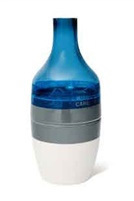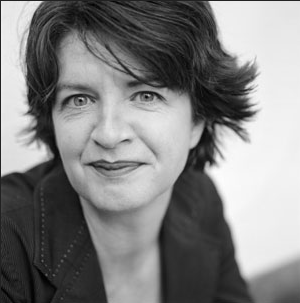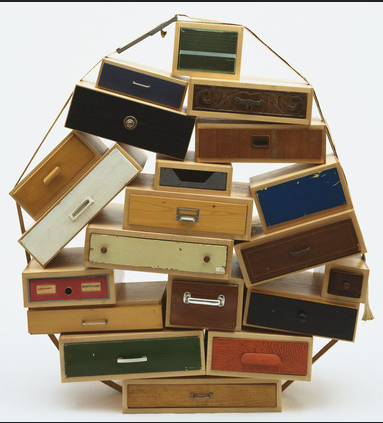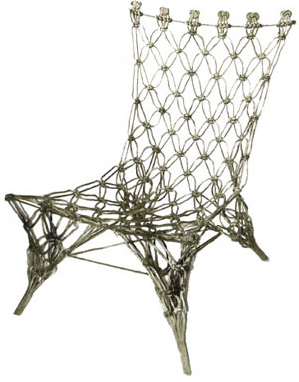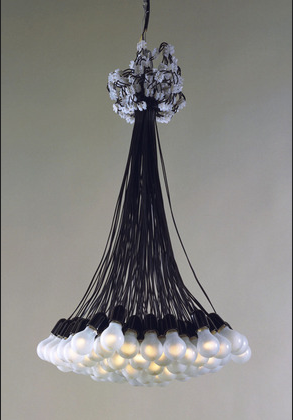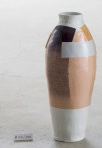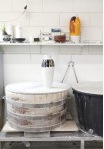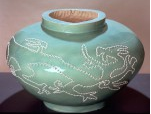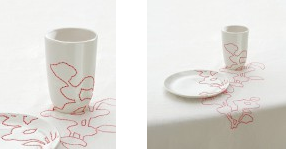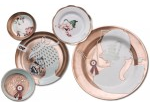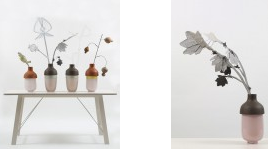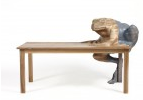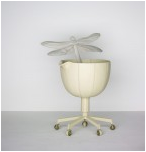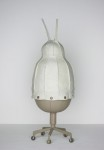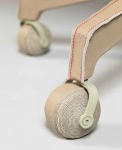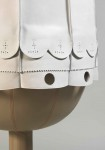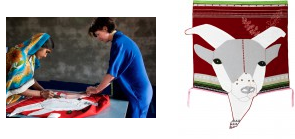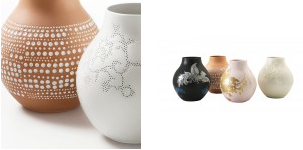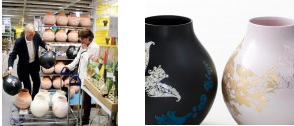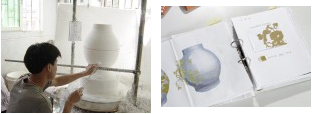Difference between revisions of "User:Joni.kling"
Joni.kling (talk | contribs) |
Joni.kling (talk | contribs) |
||
| Line 377: | Line 377: | ||
Her work is also all about experimenting, that is an interesting element to me. The search for new and exciting combinations between different materials. To use them in a different way then they are supposed too. | Her work is also all about experimenting, that is an interesting element to me. The search for new and exciting combinations between different materials. To use them in a different way then they are supposed too. | ||
| − | The misfits exhibition shows the search and experiment in new combinations. Some of the products lose their functionality because of these combinations which make them purely decorative. This is really caught my attention because now you can really see that functionality is not always the most important thing in a design. It's not always the use of the products that is most important but the combination of different techniques and materials | + | The misfits exhibition shows the search and experiment in new combinations. Some of the products lose their functionality because of these combinations which make them purely decorative. This is really caught my attention because now you can really see that functionality is not always the most important thing in a design. It's not always the use of the products that is most important but the combination of different techniques and materials which will get your attention. |
Hella Jongerius says there's more to design than simply creating more and more new objects. Quote:"I believe a designer can use her talent to update a collection and also be sustainable.". This quote I also want to take with me in my project because I think it is important to think about that subject as an designer nowadays as more and more useless stuff is product every year. | Hella Jongerius says there's more to design than simply creating more and more new objects. Quote:"I believe a designer can use her talent to update a collection and also be sustainable.". This quote I also want to take with me in my project because I think it is important to think about that subject as an designer nowadays as more and more useless stuff is product every year. | ||
Revision as of 15:55, 1 October 2014
Portfolio Joni --> portfolio
MINOR DIGITAL CRAFT
Lecture with Brain Eno
http://www.redbullmusicacademy.com/lectures/brian-eno
This is an interview at the Red Bull Academy with Brain Eno about music. In this interview he speaks of music and art in the same sentence, and the way he talks about music and it's new technological developments is very interesting to me. He talks about music and art in our society. How we like to create 'geniuses' and 'hero's' but they never come out of nothing. A lot of people were doing the same things a the time. A lot of artists were inspired by each other.
Quote Brain Eno from the interview:
You have to find out how to fuck up new technologies to create something new. Because new technologies are created for historical reasons doing things wrong, using stuff how it's not meant to be used has been a really important part of the new development in the art and music scene.
I posted this link because I think it's interesting how the developments between two different elements (music and art) are a lot the same and have a connection. And I like the way he thinks about using the new technologies in a different way (see quote).
//FANTASTIC FORGERIES//
Object chosen: Long Neck & Groove Bottle by Hella Jongerius - Jongeriuslab
ABOUT THE PRODUCT
Long Neck and Groove Bottles
Year: 2000
Material: Porcelain, glass, plastic tape
Dimensions: Long Neck Bottle: 50 x Ø 14 cm. Groove Bottle: 44 x Ø 18 cm Commission: Initiated by the designer
Production: Jongeriuslab
Category: Unlimited production
Because glass and ceramics, two traditional materials, become respectively soft and hard at different temperatures, the two can never melt and fuse together. Therefore Jongerius chose to link them with a common type of tape, used for the packaging of fragile objects. The usual hierarchy is reversed because a simple plastic tape has become the constructional device of each vase.
ABOUT HELLA JONGERIUS:
Born near Utrecht in 1963, Hella Jongerius graduated from the renowned Design Academy at Eindhoven in the early 1990s, working briefly for Droog Design before launching her solo career.
Today she is one of the most important designers of her generation. Her designs combine new technological achievements with the uniqueness and importance that only handmade historic objects possess: 'I'm trying to make products that can be loved and that people want to own their whole lives to then pass them on to the family.'
Designer Hella Jongerius has become known for the special way she fuses industry and craft, high and low tech, tradition and the contemporary. After graduating Eindhoven Design Academy in 1993 she started her own design company, Jongeriuslab, through which she produces her own projects and projects for clients such as Maharam (New York), KLM (The Netherlands), Vitra (Basel), IKEA (Sweden) and Royal Tichelaar Makkum (The Netherlands). Her work has been shown at museums and galleries such as the Cooper Hewitt National Design Museum (New York), MoMA (New York), the Design Museum (London), Galerie KREO (Paris) and Moss gallery (New York).
Hella Jongerius says there's more to design than simply creating more and more new objects.
Jongerius also explained that she enjoyed her role at Vitra as creative director of colours, because it enabled her to use her design skills more sustainably instead of constantly trying to create completely new objects. "Why make new stuff every year? I don't believe we have to have more stuff," she said. "I believe a designer can use her talent to update a collection and also be sustainable. Making stuff is just one design solution.
Jongerius believes that it is important these days to give a identity, in the physical work, that gives it a real signature, so it doesn't have to have marketing stories.
INDUSTRIAL DESIGNER
Quote Hella Jongerius
I call myself an industrial designer because I believe the industry needs this crafty approach. At the start of my career I only did self-initiated projects and it was always a theme of mine to make individual products in an industrial way. To do individual pieces is just not interesting to me because that's just a hobby. As soon as a piece is in the machinery, in the system, as soon as you start talking about a market and money, you can reach a lot of people, you can change the system. If my ideas of individuality and creativity resonate with the consumer, then the product is more than just slick, cheap mass production.
So that's why I call myself an industrial designer. I know I am not a traditional industrial designer, sending technical drawings from my computer to a company. I have questions and I like to change the way we produce.
In the 1990s she introduced imperfections and individuality into the industrial manufacturing process. Jongerius believes that the quality of craftsmanship is not legible in perfect products but only in the ‘misfits’ that betray the process and the hand of the maker. That is why she's such an important designer to my opinion.
DROOG DESIGN
Droog has played a big part in the rising of the Dutch Design in the past decade. In the early 90s, humor and intelligence brought an end to the reign of slick Italian design. No more luscious curls or bright colours, and certainly no shiny chrome, but a chandelier made up of about 40 bare bulbs knotted together and a chair that is just a bundle of old rags. Thanks to Droogs rebellious anti-design, The Netherlands were squarely placed on the map as the birthplace of progressive design talent in one fell swoop. Although a dozen rag chairs and scrap wood cabinets were ever made, they did become design classics. Droog has changed opinions about design forever - it's not just about products it's also about ideas. Droogs critical approach to designing has evolved into an open mentality in which nothing is predeterminded, and everything is up for discussion. In the 21st century, Dutch Designers create products that are elegant and very accessible, exuberant or simple breathtakingly beautiful. Dutch design stands for exclusive showpieces, but also useful objects. It utilizes both traditional crafts and digital production techniques, but it is always adventurous, singular and well-thought out. And very important: it's manufactured in the designers own workshop.
Tejo Remy - Chest of Drawers // Marcel Wanders - Knotted Chair 1996 // Rody Graumans - 85 lamps, 1994
Droog was founded in 1993 by Renny Ramakers and Gijs Bakker to promote modern Dutch Design. They decided to present works of young Dutch designers at the Salone del Mobile, the international furniture show in Milan. They used the name 'Droog' because in the designs the concept was more important then the use of it. the objects contain simplicity and dry humor. The duo presented a selection of sober designs made of industrial materials and found objects.
Droog works with independent designers to design and realize products, projects, exhibitions and events. Droog has worked with amongst others Marcel Wanders, Hella Jongerius, Tejo Remy, Richard Hutten, Ed Annink, Jurgen Bey and Joris Laarman.
// MISFITS //
Hella Jongerius: Misfit is a detailed survey of the work of Dutch product designer Hella Jongerius (b. 1963). Jongerius studied Industrial Design at the Eindhoven Design Academy and graduated in 1993. She came to prominence very soon after graduating, with a series of her designs being produced by the influential Dutch conceptual design collective Droog Design. She started her own design company, Jongeriuslab, in 1993 in Rotterdam, and in 2008 moved to Berlin. She has collaborated with many prestigious manufacturers, including Vitra, Royal Tichelaar Makkum and Swarovski, and her work is held in the collections of MoMA, the Stedelijk Museum and the Design Museum in London, amongst many others. Jongerius designs a range of products, including furniture, lighting, textiles and glassware but has a particular interest in ceramics. Her work combines the traditional with the contemporary, she is interested in new technologies and processes, and in older techniques. An extreme example of this is her ‘Red White Vase’, the shape is based upon an amalgamation of medieval pottery shards, glued together to form an archetype, put into serial production, and decorated with a type of paint usually used to paint car bodies. Jongerius is also fascinated by the value of the individual character and qualities that objects can assume, and in how individuality can be incorporated into manufactured products. For example her ‘B-Set’ of porcelain crockery, produced for Royal Tichelaar Makkum since 1997, is fired at too high a temperature during the manufacturing process, ensuring that the clay deforms slightly and giving each set a completely unique shape.
[[1]]
Keywords for Hella's approach:
- Experimenting
- Material en Technique mixing
- Simple and smart solutions
- They are not aiming for perfection.
- Don't always try to invent different things but use it in a different way
- Storytelling is an important element, and not only the quality
- Color organized
- No new collection every year but update and improve last one.
TECHNIQUES & MATERIALS IN MISFITS COLLECTION:
Coloured Vases (series 3)
Year: 2010
Material: Porcelain, 300 self-made colours through a process of mixing old and new glazes
Dimensions: Each vase: 41 x Ø 16 cm
Commission: Initiated by the designer
Production: Royal Tichelaar Makkum
Category: One-offs
Collection: Collectors Edition: 300 one-off vases are linked to copies of the monograph ‘Hella Jongerius – Misfit’ (published by Phaidon Press 2010). The second series of 300 vases is part of the collection of the designer.
The three series of Coloured Vases show experiments with colours in which the vase (Red White Vase of 1997) is used as the ‘canvas’. The first series (featuring 40 RAL colours) was produced in 2003, the second series (with 42 NCS colours) in 2007. The third version of 300 Coloured Vases, an investigation into the perception of colours that optically merge, was produced in 2010. On the basis of 100 old mineral recipes and 100 industrial colour transfers, 300 polychrome colours were produced which are reminiscent of the colour intensities of old paintings.
"Giant Prince"
Year: 2000
Material: Earthenware, glaze, embroidery
Dimensions: 44 x Ø 81 cm
Commission: Initiated by the designer
Production: Jongeriuslab
Category: Limited edition
Embroidered Tablecloth
Year: 1999
Material: Linen, cotton, earthenware
Dimensions: 80 x 120 cm
Commission: Initiated by the designer
Production: Jongeriuslab
Category: Limited edition
Decoration is reintroduced as a meaningful component in design. The merging of plate and cloth, which results from the embroidery, distorts the functionality of both items and can be considered a comment on the link between functional objects and compulsory conventions (eating). The patterns of the flower and the dragon are inspired by 14th- and 15th-century Ming vases in the Museum Het Princessehof in Leeuwarden.
Shippo Plates
Year: 2007
Material: Copper, enamel
Dimensions: Plate # 1: 3.5 x Ø 19.5 cm, plate #2: 4 x Ø 19.5 cm, plate #3: 3 x Ø 24 cm, plate #4: 3.5 x Ø 30.5 cm, plate #5: 6 x Ø 42 cm
Commission: Cibone, Tokyo
Production: Cibone and Frozen Fountain
Category: Unlimited production
A contemporary interpretation of an almost lost craft: ‘shippo cloisonné’ or ‘enamel’. The piece not only reinterprets old decorations, but also employs untreated copper, which will eventually turn black /green.
Artificial Flowers (Natura Design Magistra)
Year: 2009
Material: Various materials, including paper, wood, plastic, ceramics, glass, leather, tape, metal
Dimensions: Table: 85 x 60 x 185 cm. Flowers: various. Total height of table and flowers: 213 cm
Commission: Galerie Kreo, Paris
Production: Jongeriuslab and Galerie kreo
Category: Limited edition
Collection: Private collections
Natura Design Magistra. The flowers represent a parallel world to “real” nature, whose complexity is expressed in the diversity of materials, techniques and forms.
Frog Table (Natura Design Magistra)
Year: 2009
Material: Walnut wood, blue semi-transparent coating
Dimensions: 120 x 210 x 105 cm
Commission: Galerie Kreo, Paris
Production: Galerie kreo
Category: Limited edition
In many works Jongerius deals with the relationship between users and their products. In Frog Table the frog functions as an intermediary. The decoration has become an almost autonomous 3D figure, who will not be ignored at your table. Frog Table plays with the imagination of the user; at the same time the design reveals an outspoken view of the power of decoration in design.
Office Pets
Year: 2007
Material: Leather, metal, polyester, embroidery
Dimensions: Heights: 136, 195, and 124 cm
Commission: Vitra, Basel
Production: Jongeriuslab
Category: Limited edition
Only when the mind is able to fly do exciting ideas develop. Based on this idea, Jongerius created 3 objects that connect the rational world of offices and the narrative world of fairy tales. The limited edition is part of the Vitra Edition project (2007), a laboratory that provided architects and designers with the freedom to create experimental objects without having to deal with the constraints of market and production logic. Office Pets push the boundaries of the field, emphasising the role of the imagination rather than the function of the objects.
The first set was created by Vitra and Jongeriuslab, the next sets were created with Galerie kreo.
IKEA PS Pelle, Mikkel and Gullspira
Year: 2009
Material: Wool, cotton, decorations embroidered by hand
Dimensions: 93 x 70 cm
Commission: IKEA, Sweden
Production: IKEA
Category: Unlimited production
An IKEA-Unicef project that helps Indian women to earn a living and meet other women while their children attend school. The wall-hangings result from both industrial and craft production and honour the role of the craftspeople, as each specific fabric carries the name of the woman who contributed to it. The images are taken from Swedish fairy tales, a reference to IKEA’s homeland. This kind of time-consuming craftsmanship can only be done at affordable prices when commissioned by manufacturers who can produce and distribute the objects in large quantities.
IKEA PS Jonsberg
Year: 2005
Material: Stoneware, earthenware, porcelain and bone china, glaze and various decorations
Dimensions: 34 x Ø 30 cm
Commission: IKEA, Sweden
Production: IKEA
Category: Unlimited production
Collection: The vase is held in a large number of musuem collections, including the Stedelijk Museum ‘s Hertogenbosch and Stedelijk Museum Amsterdam. It is also held in numerous private collections!
This responds to the challenge of how to preserve traces of the craft process within a mass-produced product. The same archetypal forms are made in four ceramic techniques and their decorations refer to specific parts of the world, the Soviet Union, Africa, Asia and Europe. This kind of timeconsuming craftsmanship is only possible at affordable prices when commissioned by manufacturers who can produce and distribute the objects in large quantities.
COPY & MUTATION
Tim gave us the assignment to find projects that have similarities with my chosen object. Like color, shape, material, function or concept. This is my result.
RESEARCH
My research began with the Long Neck Bottle from Industrial Designer Hella Jongerius. There are a view aspects that I found interesting in her approach as a designer. The Long Neck Bottle is a part of her Misfit collection which was exhibited a view years ago in the Boijmans van Beuningen Museum. This 'misfit' collection explains why she became so famous to my opinion.
In the 1990s she introduced imperfections and individuality into the industrial manufacturing process. Hella was one of the first designers in Holland who didn't care about the perfection of products, but she sees beauty in little 'flaws'. Hella Jongerius has become known for the special way she fuses industry and craft, high and low tech, tradition and the contemporary. Her work is also all about experimenting, that is an interesting element to me. The search for new and exciting combinations between different materials. To use them in a different way then they are supposed too.
The misfits exhibition shows the search and experiment in new combinations. Some of the products lose their functionality because of these combinations which make them purely decorative. This is really caught my attention because now you can really see that functionality is not always the most important thing in a design. It's not always the use of the products that is most important but the combination of different techniques and materials which will get your attention.
Hella Jongerius says there's more to design than simply creating more and more new objects. Quote:"I believe a designer can use her talent to update a collection and also be sustainable.". This quote I also want to take with me in my project because I think it is important to think about that subject as an designer nowadays as more and more useless stuff is product every year.
These three elements I would like to take with me in my process. Experimenting, mixing materials and updating a product.
Bronnen
Boek Handson Dutch Design in the 21st century by Jeroen Junte, pag 6 t/m 20.
http://www.jongeriuslab.com/work/long-neck-and-groove-bottles
http://de.phaidon.com/agenda/design/picture-galleries/2010/october/28/hella-jongerius-misfit/
http://www.dezeen.com/2014/08/30/hella-jongerius-book-of-interviews/

